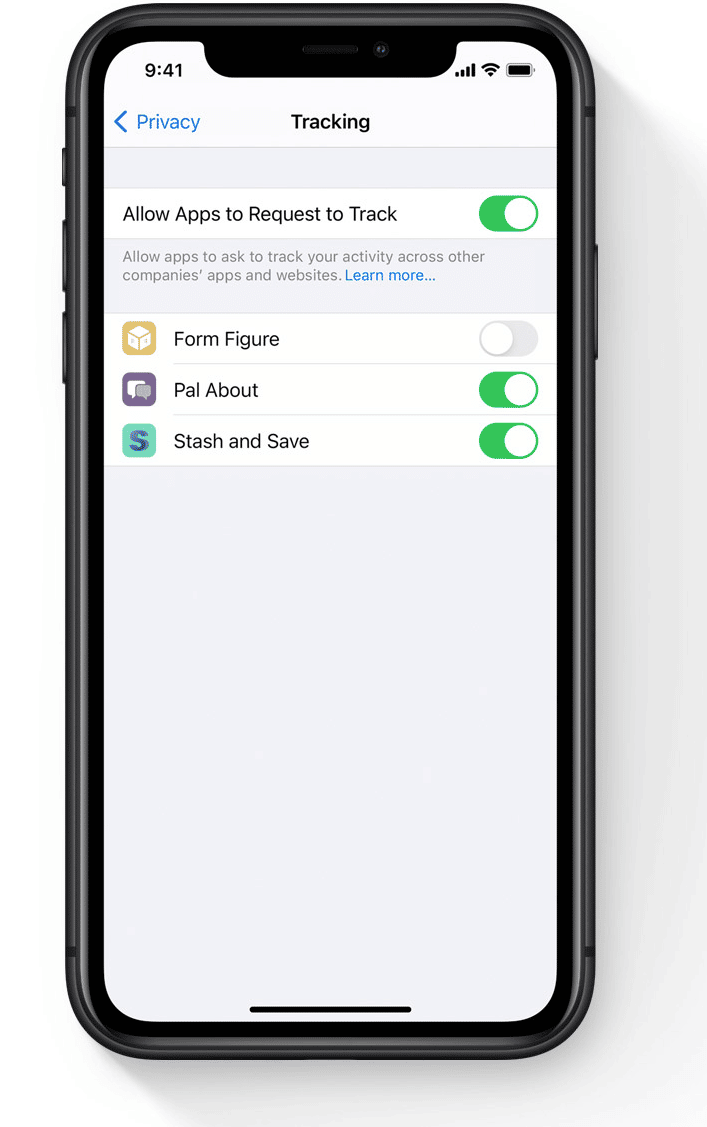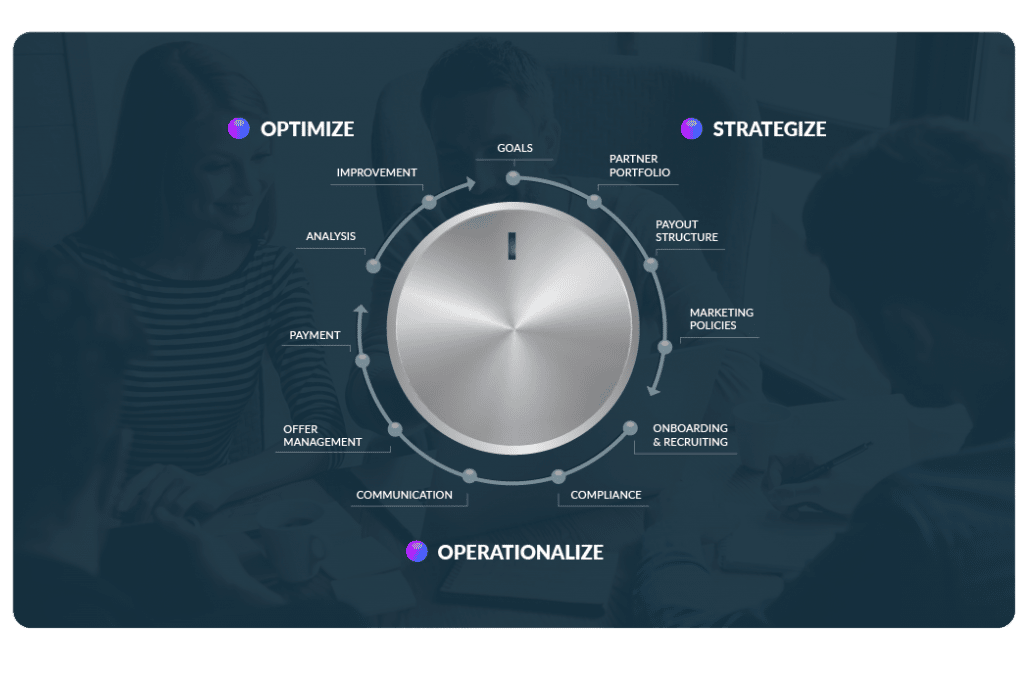
Editor’s note: This post is a collaboration between Matt Miltenberger and Connor Sliva.
2023 is here, and it’s starting off with a bang. The back half of last year was a rollercoaster for the global economy, resulting in plenty of ups and downs for the digital advertising ecosystem. Through it all, affiliate marketing has continued to expand its influence, both with brands that are enjoying the ride and those that are holding on for dear life.
As we look to the weeks and months ahead, we see a few major trends on the horizon. Keep a watchful eye on the following, and you’ll be prepared for any twists and turns that may lie ahead.
First-Party Data Takes Center Stage

Source: Apple
Today, the entire digital marketing industry is making a strong push towards protecting the data privacy of individuals, which results in less data ownership for brands and more control for the major digital players. We are seeing a similar trend in partner marketing and affiliate programs, as this not only affects what data brands have ownership of and access to for optimization purposes, but also who your program data is being shared with.
Traditionally, affiliate networks are the owners of the data collected; the brands get access to a subset of their channel data, which allows affiliate networks to use the data for their benefit. This could be something as innocent as an e-book on verticalized trends, created by aggregating and anonymizing their client data. Or, this could be potentially damaging if the network is using the data to recommend program tactics and successful partners to competing brands.
Brands like Amazon saw this trend coming from a mile away and separated themselves from the traditional affiliate networks in favor of running their own direct partner and affiliate program. TUNE’s data pledge is that our brands take full ownership of every data point we collect on their behalf, and that we will never use our client data for our benefit. This allows brands to break free from the corporate data overlords and run their own direct, privacy compliant partner and affiliate programs, without needing to build a completely custom partner management, tracking, reporting, and payment platform from scratch.
Postback Is King and Why Privacy Matters
Last year brought big changes to how partner and affiliate programs tracked consumers. In the past, most affiliate networks relied on cookies to track, and the major browsers have all started the process to limit their effectiveness. These changes resulted in major issues for brands who were using this outdated tracking approach, putting them on their heels to modernize their approach.
Most networks moved to a cookieless client-side tracking approach, which removed the limitation of cookies, but doesn’t completely mitigate the future risk of future browser policy changes. Looking at 2023, the general sentiment is that consumer privacy is the goal, and more changes are bound to be coming.
While TUNE offers similar cookieless client-side tracking options, we have been a true believer in server-side tracking since our inception and even coined the common term “postback” in the early days of the industry. This tracking method gives brands a lightweight, flexible approach to measurement, which works with both in-session conversions and delayed conversion events, like down-funnel goals, recurring subscriptions, and lifetime value for a true view of ROAS. It also works with mobile affiliate marketing, which is an area that many brands have yet to leverage.
Brands Shifting to Private, More Strategic Programs
Many of the tracking solutions available for brands to manage their partner marketing program have been built off the backs of their predecessors. Some innovation has taken place over the last few years, but there are still several hurdles and workflow limitations that brands are up against.
One common theme we’ve heard is how groups want to have a more competitive approach with the partners they work with — including not broadcasting those partners to other brands who might be running affiliate campaigns. Traditional platforms offer a marketplace of partners that any of their advertisers can access, but this creates a challenge for brands who source and manage unique partners they want to keep private.

Brands also need better daily efficiency. Getting better real-time data and the ability to activate a new partner in about thirty seconds are huge time savers. Program hygiene and keeping traffic quality high have also been more commonly discussed, and leveraging tools like our automation rules is an easy way to combat that issue. Brands have started shifting their attention to technologies like TUNE, that offer more control and freedom.
This year we’ll see brands spend time evaluating this approach more closely. The immediate change can seem overwhelming, but this is a critical strategic move in the long run. A solution that can scale with your business indefinitely, where future growth truly has no limitation.
A Future-Proof Channel in a (Potential) Recession
The affiliate channel is arguably one of the most resilient channels brands can leverage. Historically, this has been due to the pay for performance nature of the channel and discounting efforts by brands. However, in recent years the maturation of this channel has pushed publishers to innovate their media offerings to advertisers and bring new opportunities to the table. Yes, this is still a massively strong direct response channel, but more importantly, it’s the diversity in the channel that allows businesses to thrive when the macroeconomic impact is questionable.
Offering consumers a targeted incentive, or simply aligning brand and personal values at the right time, can hold buying interest and keep brands top of mind when shoppers are more selective. Discounting certainly plays a role when flexible income has evaporated for a lot of folks. Leverage the range of your partners this year. Work with your content partners to build a commerce strategy and position your goods or service with a compelling story. Partner with your discount-focused publishers to drive higher-intent consumers. Test into short-form video or dip into podcasting.
This year, we’ll see brands invest more budget and resourcing into the partner ecosystem. Overall media costs will likely increase, but we’ll continue to see publishers bring more creativity to their offerings. Content commerce will continue to eat away at traditional buying paths for consumers, and maintaining a competitive edge will be critical. Affiliate is a massively efficient channel when programs are managed the right way.
In Conclusion
It’s been an interesting six months across the broader technology space, and while it’s hard to predict where this year will take us, there is no doubt that partner marketing channels will see sizable growth. Whatever happens, it’s sure to be an exciting ride.
What trends do you predict for the affiliate marketing industry in 2023? Let us know in the comments below!
Author
Matt Miltenberger is the Head of Sales for the East Coast region at TUNE. He has spent the last 10 years in the e-commerce and partnerships space, helping several enterprise-level and emerging businesses in the retail, health and wellness, fintech, travel, and mobile verticals accelerate their growth. He most recently spent nearly five years with a prominent partner marketing agency, and can often be found tinkering in the kitchen with new recipes.



